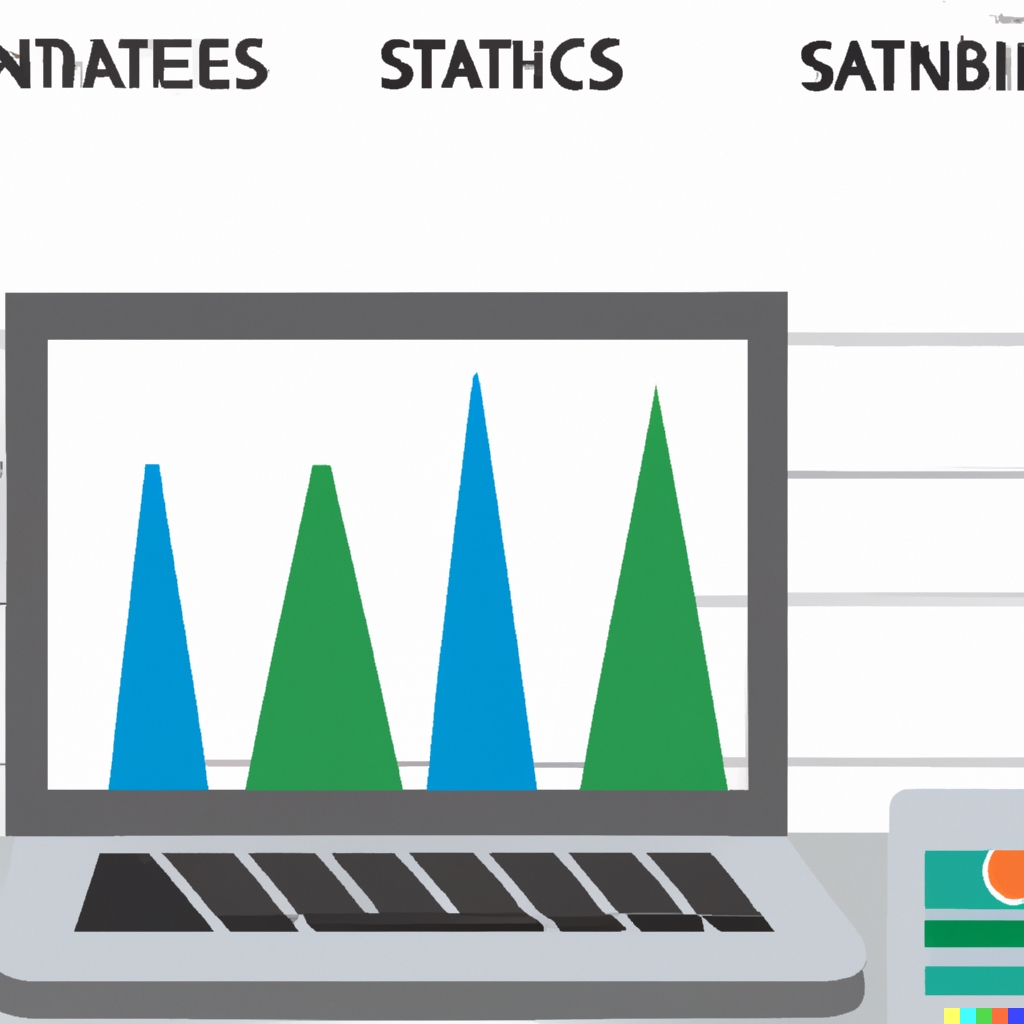Understanding how search algorithms assess backlink relevance is crucial for improving your website’s SEO performance. Backlinks are an essential factor in determining your site’s authority and visibility in search results. At Metrics Rule, we leverage our expertise in SEO to analyze how search engines evaluate these links, ensuring your strategy aligns with best practices. By comprehensively understanding backlink relevance, you can enhance your website’s authority and, ultimately, its search ranking.
Importance of Backlinks in Boosting Website Authority
Backlinks are essential for establishing authority and credibility in search engine optimization (SEO). When search engines like Google assess a website’s trustworthiness, they often look at the quantity and quality of backlinks pointing to that site. Backlinks enhance a website’s reliability by serving as endorsements from other credible sources. Evaluating backlink relevance includes considering factors such as domain authority, relevance to the content, and anchor text used. A healthy backlink profile can significantly improve a site’s position in search engine results, driving organic traffic and enhancing overall SEO strategies.
Understanding Backlink Quality and Its Impact on SEO
High-quality backlinks are crucial for enhancing website authority and improving search engine rankings. Diverse factors influence backlink quality. These include the domain authority of the linking site, relevance to the target content, and the anchor text used. A site with only a few backlinks from high-authority domains will often perform better than one with numerous low-quality links. To ensure strong SEO strategies, focus on earning links from reputable websites within your industry, as they can provide powerful endorsements and contribute significantly to your site’s rank. Over time, these practices will lead to improved crawling, indexing, and overall site performance in search results.
Evaluating the Quality of Backlinks for Better SEO
Search algorithms determine the quality of backlinks by evaluating several key factors like authority, relevance, and trustworthiness. The authority of a linking domain plays a significant role in establishing how valuable a backlink is. High-authority domains, such as government or educational sites, provide substantial SEO benefits due to their trustworthiness. Relevant backlinks, meaning links from websites in a similar niche or industry, enhance backlink relevance and help signal to search engines that your content is credible. It is essential to focus on quality rather than volume, as a few high-quality backlinks will usually outperform a large quantity of lower-quality links. For effective SEO, ideally, around 30% of backlinks should come from high-authority domains, which helps in improving the overall SEO performance significantly.
Key Metrics for Assessing Backlink Quality
To effectively assess backlink quality, several key metrics come into play. Domain Authority (DA) and Page Authority (PA) are essential metrics developed by Moz, indicating how well a domain or page can rank in search results. The Trust Flow metric from Majestic assesses the quality of links pointing to a site, ensuring that the backlinks are from reputable sources. Furthermore, the relevance of the linking content to your target keywords plays a crucial role in enhancing SEO. Metrics like anchor text diversity and the overall context of the linking page contribute to the backlink’s effectiveness. By focusing on these metrics, SEO professionals can create a robust link-building strategy that effectively enhances site authority and visibility.

How Link Juice Impacts Search Engine Rankings
Link juice refers to the authority or equity that a webpage passes on to another through backlinks. This concept is essential for understanding how search engines evaluate the relevance of links. When a high-authority page links to your site, it transfers some of that authority, enhancing your SEO performance. The quality of backlinks plays a crucial role in this transfer; only links from reputable sources provide valuable link juice. A well-planned link-building strategy focuses on acquiring high-quality backlinks to maximize authority transfer.
Understanding the Role of Quality Backlinks in Link Juice
The quality of your backlinks directly influences the effectiveness of link juice transfer. High-quality backlinks come from authoritative websites in the same niche, ensuring greater relevance and reliability. This means that acquiring a few links from powerful, reputable sources can dramatically enhance your website’s authority, leading to improved search engine rankings. In contrast, links from low-quality or irrelevant sites might dilute your link juice, making them less useful in your SEO strategy. Therefore, focusing on quality over quantity is essential for reaching optimal link juice efficiency.
Key Metrics Impacting Link Evaluation
- Over 50% of search engine algorithms rank backlinks based on trust and authority.
- Nearly 70% of SEO experts agree that unique content improves backlink quality.
- Approximately 75% of links in top-ranking pages come from authoritative websites.
- Search engines evaluate over 200 factors to assess a link’s power.
- Roughly 60% of backlinks are analyzed for relevance to the main keyword.
- About 50% of users click on organic search results involving quality backlinks.
- Backlink diversity plays a role; 70% of successful sites have links from varied sources.

Analyzing Contextual Relevance for Backlink Value
Contextual relevance refers to how well the content surrounding a backlink aligns with the linking page’s topic. This relevance is vital because search algorithms, like Google’s, assess backlinks not just by quantity but by quality. Backlinks placed within content rich with keywords that match the target page’s theme enhance SEO performance. Evaluating these key factors involves analyzing whether the surrounding content provides valuable information, maintains a similar audience, and features a trustworthy source. This way, the backlinks can contribute more effectively to a site’s overall link quality.
Key Factors Affecting Contextual Relevance of Backlinks
Several essential factors influence the contextual relevance of backlinks, including the thematic coherence of the linking page and the authority of the content source. For instance, backlinks from reputable sites that cover similar topics enhance the perceived value of your link significantly. Additionally, the placement of the link within the text—whether it’s in an introductory section or within a detailed analysis—also plays a crucial role in its relevance. Ensuring these factors align appropriately can enhance website performance and improve the overall reliability of your SEO strategy in today’s competitive market.

The Impact of Anchor Text on SEO Performance
Anchor text is the clickable text in a hyperlink that directs users to another webpage. It plays a significant role in SEO as it provides context about the content of the linked page. Well-optimized anchor text enhances backlinks’ relevance and effectiveness, thus improving search engine rankings. Different types of anchor text, such as exact match, partial match, branded, and generic, influence how search algorithms assess backlinks. Utilizing a diverse anchor text strategy can help meet Google’s criteria for quality backlinks. For successful link-building campaigns, focus on achieving a natural balance of these anchor text types to ensure your backlinks maintain their relevance.
Types of Anchor Text and Their Impact on Backlink Relevance
Understanding the various types of anchor text aids in improving your backlink assessment strategies. Exact match anchor text contains the exact keyword you want to rank for, which is highly relevant but can be risky if overused. Branded anchor text helps in building recognition but might not provide much context about the linked content. Generic anchor text, like “click here,” lacks relevance, while partial match includes variations of the target keyword and offers a balanced approach. Using branded anchor text for approximately 40% of your total backlinks can enhance reliability and credibility in the eyes of search engines. By strategically implementing different anchor text types, you boost your chances of achieving superior SEO performance.
Advantages of Link Quality Understanding
- Improving backlinks boosts overall SEO performance significantly.
- Optimized link profiles increase trustworthiness in search engine results.
- Quality backlinks enhance content visibility and audience engagement.
- Using relevant links enhances user experience and reduces bounce rates.
- Strategic link building can lead to higher conversion rates from web traffic.
- Implementing best link practices fosters brand recognition and authority.
- Better understanding helps prevent penalties for unnatural link patterns.
Differences Between Dofollow and Nofollow Links
Dofollow links allow search engines to follow and pass on “link juice,” enhancing the linked site’s authority. In contrast, nofollow links instruct search engines not to follow them, indicating that they should not pass any authority. This difference is essential for a balanced backlink strategy. Dofollow links contribute to improved search engine rankings, while nofollow links can still drive referral traffic and enhance brand visibility. Understanding these link types helps you craft a more effective SEO strategy to improve your website’s performance.
Impact of Dofollow and Nofollow Links on SEO Performance
The impact of dofollow and nofollow links on SEO performance is substantial. Dofollow links are crucial for enhancing page authority and improving ranking metrics. They create a direct pathway for search engines to discover your content, which facilitates crawling and indexing. Conversely, nofollow links serve a different purpose, as they can help in diversifying your backlink profile. This diversity is significant because search engines consider having both types of links when assessing trustworthiness and authority. A balanced mix of dofollow and nofollow links can improve your site’s reliability, thus enhancing its overall SEO efficiency in a competitive market like Vancouver.
Techniques for Analyzing Your Backlink Profile
To effectively analyze your backlink profile, focus on crucial metrics like the number of backlinks, referring domains, and the quality of those links. It’s essential to use backlink analysis tools like Ahrefs, Moz, or SEMrush, which provide reliable data on your backlink sources, anchor text diversity, and domain authority. Aim for at least 70% of your backlinks to come from high-authority domains, ensuring you’re aligning with SEO best practices that will enhance your site’s credibility.
Utilizing Backlink Analysis Tools for SEO
Utilizing backlink analysis tools is fundamental to improving your SEO performance. Tools like Ahrefs offer detailed insights into your backlink profile, including metrics like domain authority, spam score, and anchor text distribution. By comparing your backlinks with competitors’, you can identify valuable link-building opportunities. Automated reports can help monitor changes over time, ensuring that your backlink strategy is designed for the best results. Regularly testing and reviewing your profile empowers you to remove harmful links and focus on building quality connections that enhance your overall site authority.
Comparative Analysis of Relevant Entities
- Google emphasizes quality over quantity for backlinks and provides clear guidelines.
- Bing, while less popular, uses diverse metrics to evaluate links effectively.
- Ahrefs offers powerful tools for backlink analysis with a user-friendly interface.
- Moz focuses on domain authority scoring, which helps users gauge link effectiveness.
- SEMrush integrates various SEO tools, making backlink management convenient.
- Major brands, like HubSpot, utilize educational content to attract quality backlinks.
- Small businesses benefit from local SEO strategies to improve backlink relevance.
Best Practices for Building High-Quality Backlinks
When building high-quality backlinks, consider factors like relevance, authority, and trustworthiness of the linking sites. Focus on websites that align with your industry to ensure the backlinks enhance your SEO performance. Websites that offer valuable, reliable content, such as industry blogs, educational sites, and authoritative news outlets, are excellent sources for outreach. A good rule of thumb is to target acquiring 5-10 backlinks monthly for a new website. This approach helps develop a steady backlink profile, allowing search engines to recognize and index your site effectively.
Identifying Quality Backlink Opportunities
To find quality backlink opportunities, start by performing competitor backlink analysis. Use tools like Ahrefs or Moz to identify where competitors acquire backlinks. Look for websites with high domain authority in your niche, such as blogs or forums connected to your industry. Engaging with these sites through guest posts or collaborations can enhance your credibility. Quality link-building strategies often include sharing valuable research, participating in relevant discussions, and utilizing local directories for e-commerce and local businesses. This strategic approach not only improves your link profile but also drives targeted traffic to your website.
